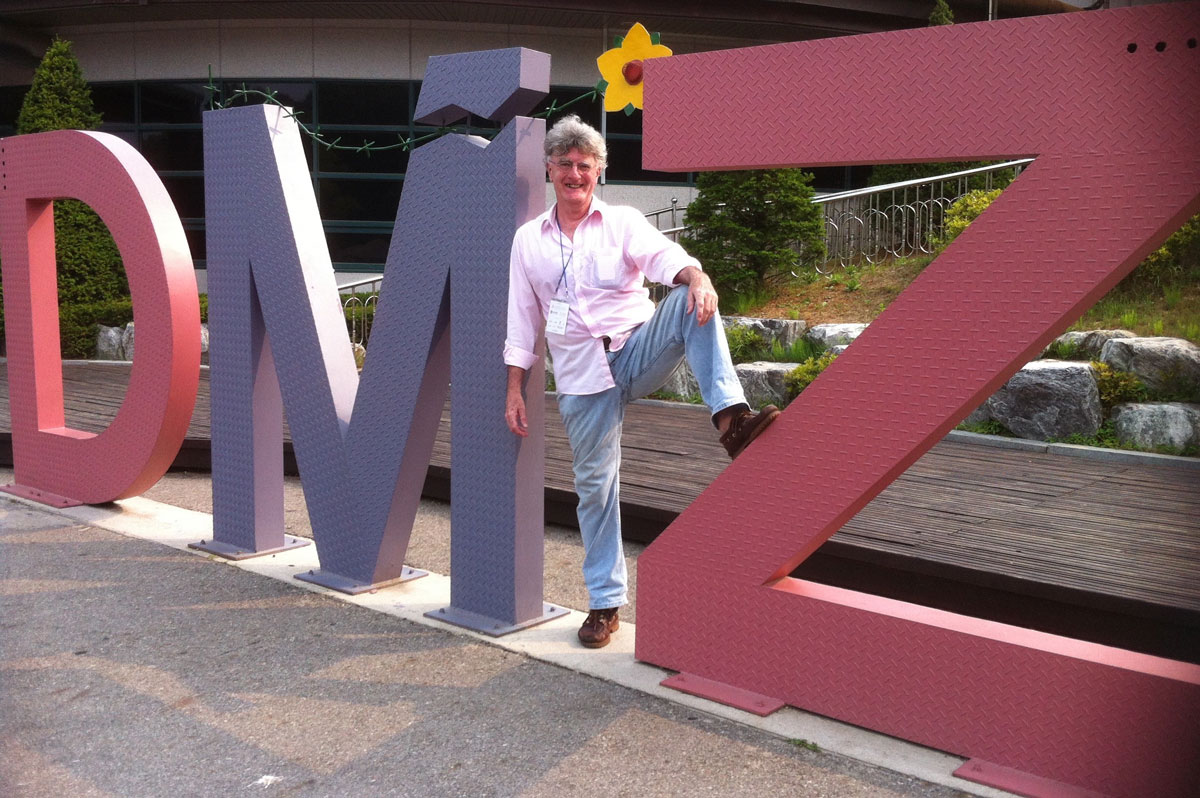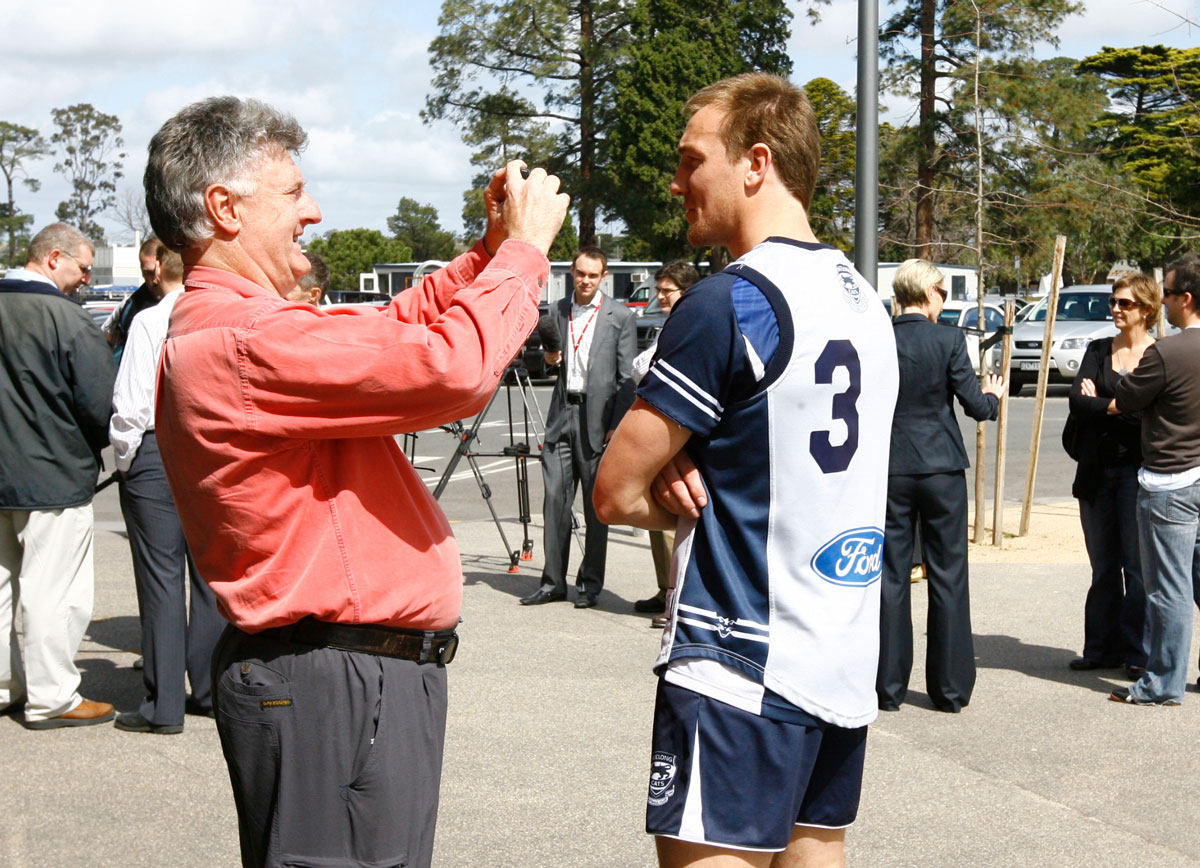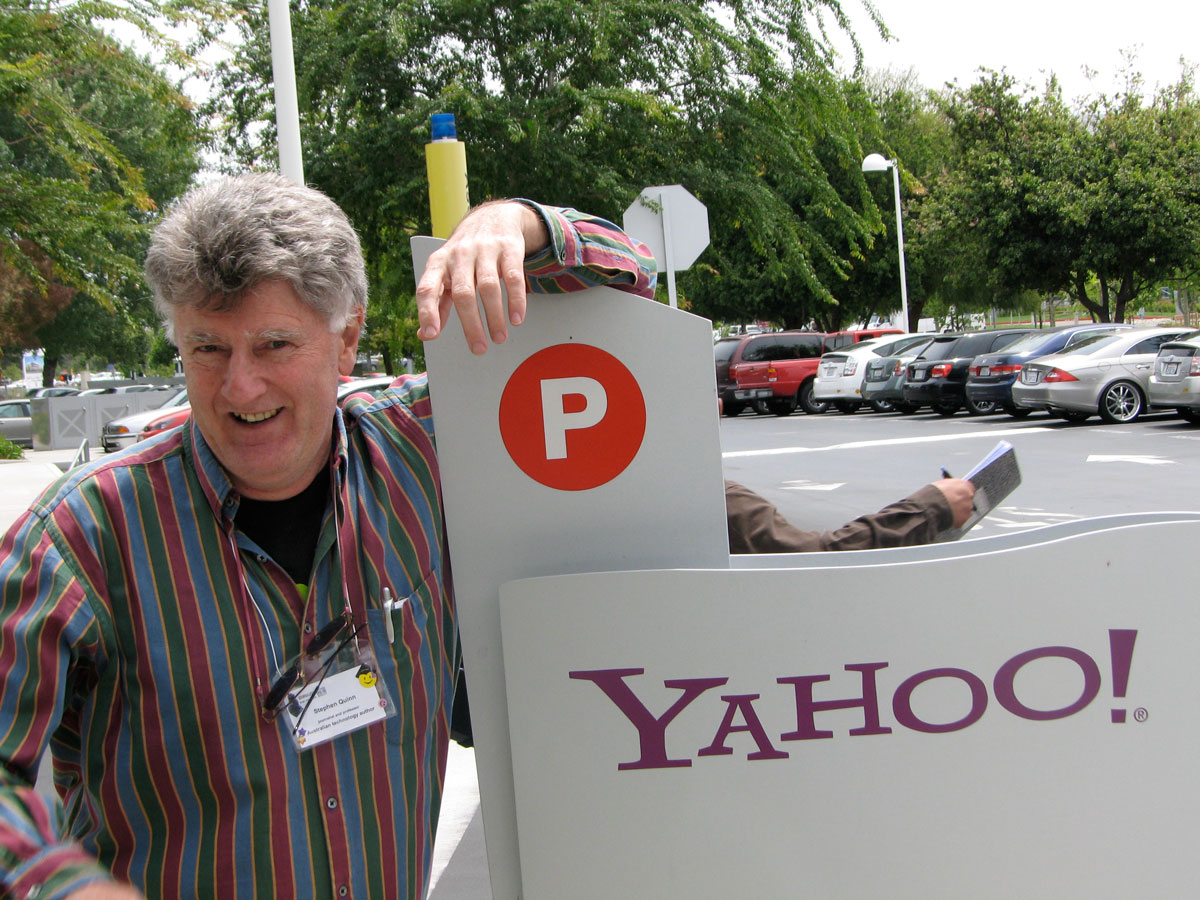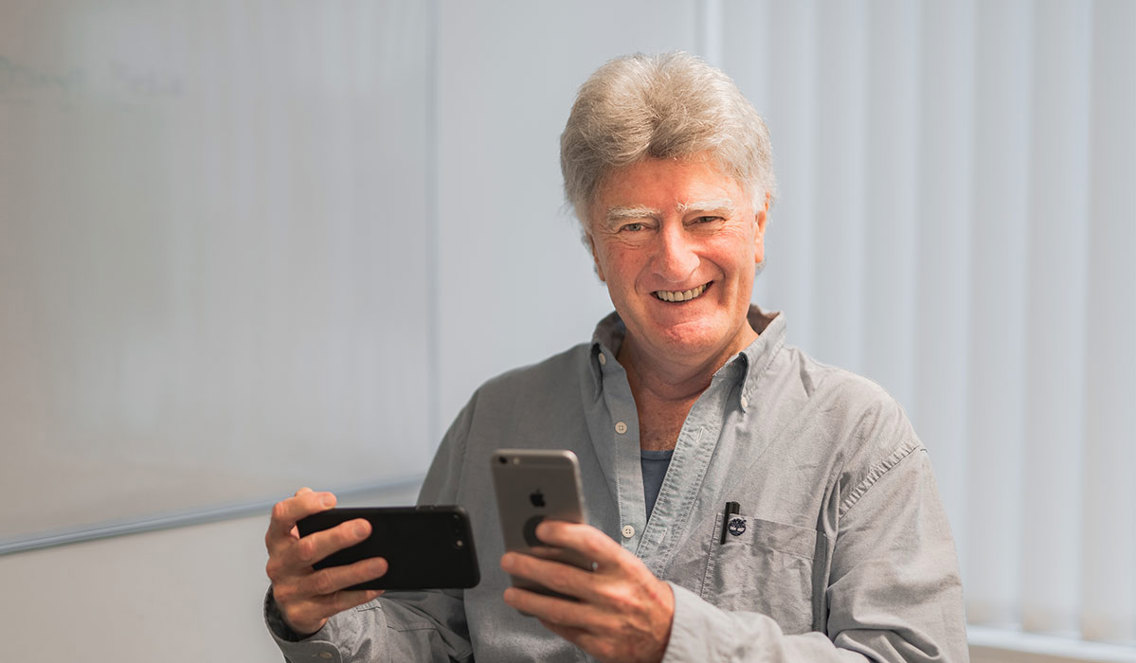Mobile journalism handbook on prestigious list
Dr. Quinn has lived in nine countries and taught journalism in five. Recently his work ended up on the list 100 Best Journalism Books of All Time. The professor at Kristiania University College was surprised, and how he started with mobile journalism is just as surprising.
“I didn't expect this. I knew nothing about it. In fact, I only found out when my co-author Dr. Ivo Burum put a note on Facebook,” says Stephen Quinn about the renewed fame of The Mobile Journalism Handbook: How to Make Broadcast Videos with an iPhone or iPad.
There are now more mobile phones than people on the planet, and trained people can use them to gather information very easily.
The book, published by Routledge six years ago, ended up on a 34th place on the list provided by BookAuthority. This is where only the very best books are said to be featured. Judges include the likes of Bill Gates, Krystal Ball and Seth Rogen. The Australian professor finds it very flattering that the book is recommended by highly esteemed thought leaders and experts.
“Our book came out in 2015. It seems like a long time ago. The nice thing is that usually if a book is not selling very well, the publisher either forgets about it or ask for a second edition. We've never been asked for a second edition.”
He still receives a royalty statement every six months.
One of a kind & kind
This was the first book ever devoted specifically to training citizen journalists, students and media professionals to produce high quality videos with only a mobile device at hand.
“What made you realise that you needed to write a textbook like this?”
“Dr. Burum and I saw that the mobile phone was the likely, primary news gathering tool that journalists would use. It has really revolutionized the way that people collect information. There are now more mobile phones than people on the planet, and trained people can use them to gather information very easily.”
The mobile phone has for a number of years been an important tool for reporting in countries like the Philippines and Russia because they are discreet.
This is of vital importance, especially in regimes where freedom of the press is oppressed. This year’s Nobel Peace Prize will be awarded to two journalists. Maria Ressa and Dmitry Muratov are being recognized for their efforts to safeguard freedom of expression, which is a precondition for democracy and lasting peace.
“The mobile phone has for a number of years been an important tool for reporting in countries like the Philippines and Russia because they are discreet, and because people do not feel overwhelmed by them, as they would if confronted with large broadcast cameras.”

Quinn has actually interviewed Maria Ressa, the Manilla-based journalist several times, and Ressa features in chapter 3 “Citizen-aided news in the Philippines” in volume 2 of Asia’s Media Innovators, published in 2010. She was then a Senior Vice President for news & current affairs at ABS-CBN, the biggest TV network there.
“At the time I recognised her energy, talent, flair and drive. She’s also a lovely human being with a deep compassion for the people of the Philippines.”
The professor adds that her country is the home of many early adopters of mobile journalism.
Life changing challenge
It all started in September 2007. Quinn was visiting a newspaper editor in the port city of Geelong, the second largest city in Victoria after the capital Melbourne. He recalls, “I was telling him about this new thing called MOJO, and he said: OK if this is so cool, prove it to me!”
It was a couple of days before the grand final of the biggest Australian rules football game of the year, and the local team was one of the two teams in the grand final. They were having a press conference in about an hour, so Quinn took his Nokia N90 and went down to the briefing. His mobile phone was one of the few that had a video camera.
With a lot of practical people, like journalists, you can't talk about it. You gotta prove it.
The rule was that the star player would come out to make a presentation for ten minutes but would not field any questions. And after he presented his statement, he would return to the players’ shed.
“In those days people did not film with their mobile phones, and only a few took photographs. So as the star player was walking back, I walked alongside him. He must have thought I was snapping a fan photograph, but I asked him a couple of questions and filmed the answers.”
Quinn streamed that video back to the website of the daily newspaper, and the editor was so impressed that he went out and bought a couple of Nokia N90’s. Point taken!

“With a lot of practical people, like journalists, you can't talk about it. You gotta prove it.”
Worldwide demonstrations
After this incident the professor had many requests from a range of daily media companies, mostly newspapers, from The World Association of Newspapers and News Publishers (WAN-IFRA). For several years he travelled around the world demonstrating MOJO.
“They didn’t pay me, but they paid my airfare and accommodation, so I got to travel to many interesting parts of the world. I would always do a live demo, to show what was possible.”
Usually, he would interview someone from the audience and project it onto a big monitor onto the screen. That way people could see that it was live. That was the beginning of his involvement with mobile phones.

Quinn started using an iPhone in 2008 because of the apps that allow you to edit video on your phone.
“Originally iOS was the only one that allowed you to have multiple video editing tracks, and you need at least two to create a proper piece of video during the editing process.”
In terms of speed and professionalism Dr. Burum and I have always argued that full or proper MOJO is where everything is done on the smartphone.
He argues that “full” MOJO involves doing everything on the smartphone.
“For a long time, people were filming with mobile phones and then transferring the images to their laptops or PCs for editing, but in terms of speed and professionalism Dr. Burum and I have always argued that full or proper MOJO is where everything is done on the smartphone, and until recently that was only possible with an iOS device.”
In the last couple of years new apps have evolved that are cross platform, allowing you to edit on both iOS and Android.
“So, the hard-core MOJO’s do everything on their smart phones?”
“Yes, because it’s just faster and easier when you are using the touch functionality.”
Since the early start it's basically spread from being a journalistic tool to a whole range of possibilities. For example, NGOs have started giving out mobile phones to people to film atrocities in Africa. You put the power of reporting in the hands of the people.
It’s the brain that makes you a journalist. So increasingly I distinguish between teaching intellectual process versus pushing buttons.
“In many cases it is the tool of choice for so many creative people. Lady Gaga does her music videos on a smart phone. People in Hollywood have started making movies, and there have been Academy Award nominations for a movie called Tangerine. Steven Soderbergh made a movie called Unsane in 2018, all shot on an iPhone.”
The story of storytelling
The Mobile Journalism Handbook: How to Make Broadcast Videos with an iPhone or iPad is not just a step-by-step guide to mobile technology and apps. In the book the two authors underline the importance of story and storytelling.
Quinn has an iPhone 11 with his Norwegian SIM-card in and an iPhone 12 for his life in the UK. He holds up his latest mobile phone and says that this thing does not make you a journalist.
“It’s the brain that makes you a journalist. So increasingly I distinguish between teaching intellectual process versus pushing buttons. A lot of teaching about journalism and MOJO is taught by the people I call button pushers. In other words, they say ‘this is how we use the latest software update, the latest app, the latest microphone’.”
He says they forget that technology changes – software gets updates, hardware is always changing. But the processes that he calls the aesthetic principles of creative filming and the magical processes of editing – they remain consistent.
“I'm much more interested in teaching those lifelong processes. If I teach you how to frame properly, you can use any camera. If I teach you how to edit properly, you can edit on any device. As opposed to someone teaching you about the latest update on your iPhone or microphone.”
Anybody can point a camera at something that is happening and get at a reasonable piece of footage. It's then taking that footage and making it into a story.
Quinn underlines that this is a key distinction: there are too many people explaining “button pushing” instead of MOJO as an intellectual process.
“As you see it, what is the hardest part of MOJO?”
“It is the creative part. Anybody can point a camera at something that is happening and get at a reasonable piece of footage. It's then taking that footage and making it into a story. Learning storytelling is the key skill, and that applies to all forms of journalism.”


